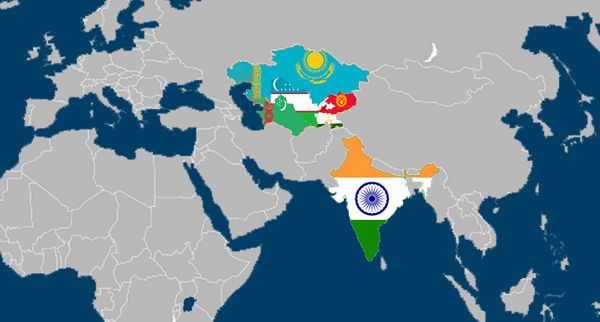- Courses
- GS Full Course 1 Year
- GS Full Course 2 Year
- GS Full Course 3 Year
- GS Full Course Till Selection
- MEP (Mains Enrichment Programme) Data, Facts
- Essay Target – 150+ Marks
- Online Program
- GS Recorded Course
- NCERT- First Ladder
- Polity
- Geography
- Economy
- Ancient, Medieval and Art & Culture AMAC
- Modern India, Post Independence & World History
- Environment
- Governance
- Science & Technology
- International Relations and Internal Security
- Disaster Management
- Ethics
- Current Affairs
- Indian Society and Social Issue
- CSAT
- 5 LAYERED ARJUNA Mentorship
- Public Administration Optional
- ABOUT US
- OUR TOPPERS
- TEST SERIES
- FREE STUDY MATERIAL
- VIDEOS
- CONTACT US
Chang'e-6: 1st Mission to return samples from the far side of the Moon
Chang'e-6: 1st Mission to return samples from the far side of the Moon
24-07-2024
- China's Chang'e-6 mission successfully landed an uncrewed spacecraft on the far side of the moon on June 1st, 2024 and returned with valuable samples on June 25, 2024, concluding its 53-day-long mission.
- Chang’e-6 is the 1st mission in human history to return samples from the far side of the moon
- The Chang'e-6 craft touched down in a gigantic impact crater called the South Pole-Aitken Basin on the moon's space-facing side.
- This region is of particular scientific interest due to its unique geological features, including a thicker crust and a greater number of craters than the near side.
- The Chang'e-6 probe, launched in May 2024 on China's Long March 5 rocket.
Mission Objectives
- The mission aims to collect 2 kg (4.4 pounds) of lunar material over two days and bring it back to Earth.
- Analyze these samples to gain insights into the moon's 4.5-billion-year history, the solar system's formation, and the differences between the moon's dark and light sides.
- The mission will also allow for an unprecedented comparison between the dark, unexplored region with the moon's better understood Earth-facing side.
Why Explore the Far Side of the Moon?
- The Moon’s far side is often referred to as the dark side because it cannot be seen from the Earth, not because it does not catch the Sun’s rays.
- The far side has a thicker crust, more craters and fewer maria, or plains where lava once flowed.
- Examining the samples from the far side can help scientists solve mysteries about the origin and evolution of the Moon.
- The far-side samples can also give answers to the longstanding question: why is it different from the near side?
- “Going to the far side, getting samples and doing different kinds of geophysical measurements is really important to figuring out this really long, long-standing mystery,” Brett Denevi, a planetary geologist at the Johns Hopkins University’s Applied Physics Lab, told CNN.
Challenges and Solutions
- Landing on the far side of the moon presents significant challenges due to the lack of direct communication with Earth.
- To overcome this, the mission relied on a relay satellite to maintain contact and employed advanced automation for navigation and sample collection.
- A simulation lab was also used prior to the mission to develop and test sampling strategies and equipment control procedures, ensuring the mission's success.
Significance of the Mission
- The successful mission elevates China's space power status in a global rush to the moon, where countries including the United States are hoping to exploit lunar minerals to sustain long-term astronaut missions and moon bases within the next decade.
- China's lunar strategy includes its first astronaut landing around 2030 in a programme that counts Russia as a partner.
China's Lunar Exploration Program
- The Chang'e-6 mission builds upon China's previous successes in lunar exploration, including the Chang'e-4 mission, which landed on the far side in 2019 and deployed a rover to explore the Von Kármán crater.
- These missions are part of China's broader lunar exploration program, which aims to establish a long-term presence on the moon and utilize its resources.
Comparison with Other Countries
- The United States is the only country to have landed humans on the moon, starting in 1969.
- Other countries that have sent spacecraft to Earth's nearest neighbour are the then-Soviet Union, India, Japan, and the United States.
- Japan's SLIM lander touched down in January, followed the next month by a lander from U.S. startup Intuitive Machines.
Future Plans
- The U.S. Artemis programme envisions a crewed moon landing by late 2026 or later.
- NASA has partnered with space agencies including those of Canada, Europe, and Japan, whose astronauts will join U.S. crews on an Artemis mission.
- Elon Musk's SpaceX aims to attempt the first astronaut landing since NASA's final Apollo mission in 1972 with its Starship rocket.
Conclusion
China's Chang'e-6 mission represents a major leap forward in lunar exploration and scientific discovery. By successfully landing on the far side of the moon and returning with valuable samples, China has solidified its position as a leader in space exploration and opened up new avenues for research and understanding of our celestial neighbor.



